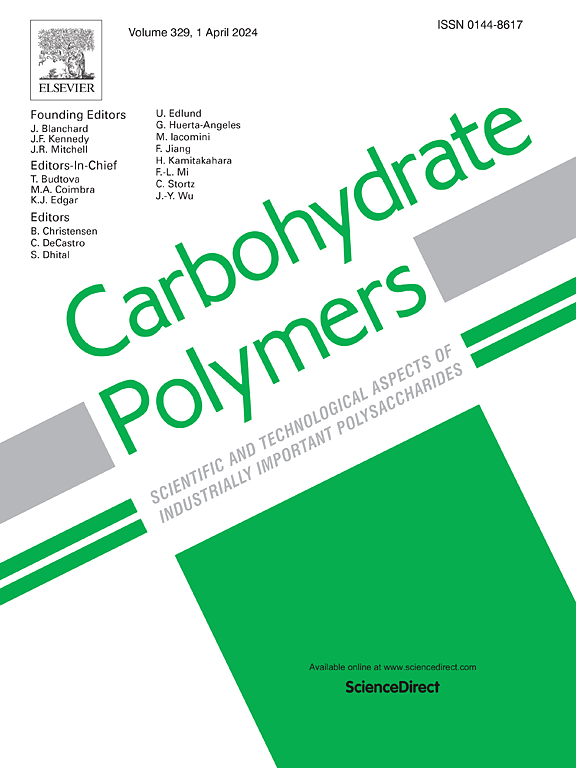Constructing anisotropic and strong polysaccharide-based hydrogels with stretching-dehydration strategy: Effect of sodium alginate, pectin, gellan gum, and curdlan
IF 10.7
1区 化学
Q1 CHEMISTRY, APPLIED
引用次数: 0
Abstract
Polysaccharide-based hydrogels are widely utilized in the food industry and materials science due to their safety and abundance from natural sources. However, their functionality is often limited by poor mechanical properties, primarily due to their simple and isotropic structures. In this study, the stretching-dehydration (SD) processing was applied to create anisotropic structure and enhance the mechanical properties in polysaccharide-based hydrogels, specifically sodium alginate (SA), pectin (PE), gellan gum (GG), and curdlan (CU). Among these, low molecular weight sodium alginate (SA-L) hydrogel exhibited notable stretching-induced anisotropy and structural stability during dehydration. Furthermore, increasing the controlled strains (CSN) could improve anisotropy, stretching strength, and Young's modulus which reached up to 100 MPa in anisotropic SA-L hydrogel. The anisotropic hydrogels closely mimicked the microstructure of whole-muscle foods. Sensory evaluations highlighted the enhanced chewiness and hardness, suggesting the anisotropic hydrogels are promising candidates for emulating whole-muscle textures. This work highlights the potential of anisotropic hydrogels produced through simple SD treatment as advanced materials for both food and biomimetic applications.

求助全文
约1分钟内获得全文
求助全文
来源期刊

Carbohydrate Polymers
化学-高分子科学
CiteScore
22.40
自引率
8.00%
发文量
1286
审稿时长
47 days
期刊介绍:
Carbohydrate Polymers stands as a prominent journal in the glycoscience field, dedicated to exploring and harnessing the potential of polysaccharides with applications spanning bioenergy, bioplastics, biomaterials, biorefining, chemistry, drug delivery, food, health, nanotechnology, packaging, paper, pharmaceuticals, medicine, oil recovery, textiles, tissue engineering, wood, and various aspects of glycoscience.
The journal emphasizes the central role of well-characterized carbohydrate polymers, highlighting their significance as the primary focus rather than a peripheral topic. Each paper must prominently feature at least one named carbohydrate polymer, evident in both citation and title, with a commitment to innovative research that advances scientific knowledge.
 求助内容:
求助内容: 应助结果提醒方式:
应助结果提醒方式:


